|
WHITMAN MISSION National Historic Site |
 |
Reinforcements for Oregon
Their first, short winter at Waiilatpu passed swiftly for the missionaries. But by summer a dissatisfied and restless William Gray left Oregon, without Whitman's knowledge but with Spalding's approval, to visit the East. Gray was unhappy with his position of mechanic and helper to the mission. He was ambitious to become a missionary in his own right, but neither Whitman nor Spalding felt he was qualified for such work. In Boston, Gray was coolly received by the American Board, but the trip gained him two things: he attended medical college briefly, and he married Mary Augusta Dix.
At this time the American Board was recruiting the only reinforcements it was to send to Oregon. In March 1838 Gray and his wife joined this group, and the party headed overland for Oregon. Besides the Grays there were tall, shy Elkanah Walker and his cheerful wife, Mary; serious-minded Cushing Eells and his frail-looking wife, Myra; and fault-finding but intelligent Asa Bowen Smith and his sickly Sarah. Before they reached St. Louis, they were joined by Cornelius Rogers, a bachelor. In addition to the usual hazards, the journey was complicated by a clashing of strong personalities. One thing the new missionaries agreed upon, however, was that none of them wished to be assigned to the same station as William Gray.
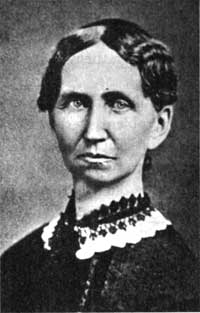 Mary Walker. |
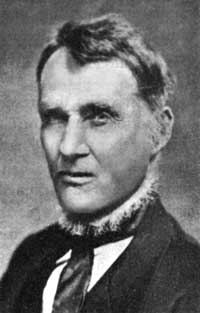 Elkanah Walker. |
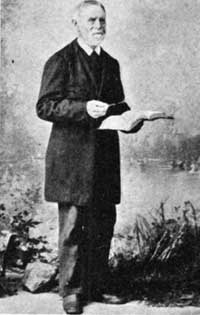 Cushing Eells. |
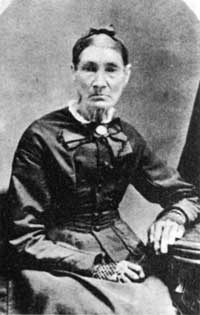 Myra Eells. |
| ALL WHITMAN COLLEGE | |
Upon the new missionaries' arrival at Waiilatpu, a meeting was held to decide a course for the future. Agreement was soon reached on the composition of the stations. The Grays were to join the Spaldings at Lapwai. The Smiths and Cornelius Rogers were to stay with the Whitmans. The Walkers and Eellses, the two couples among the newcomers who got along best, were to open a new station to the north among the Spokan Indians near Fort Colville. But these plans were to be changed in part.
Walker and Eells visited the Spokan tribe that autumn and selected a site at Tshimakain ("the place of springs"). But winter was close at hand, and they returned to Waiilatpu to await spring. The Grays went to Lapwai, where Spalding and Gray quarreled throughout the winter. At Waiilatpu, the Whitmans' little house was crowded to an uncomfortable degree. Although the new mission house was far enough along for the Smiths to move into it in December, the first house then had to make room for the arrival of Mary Walker's first son.
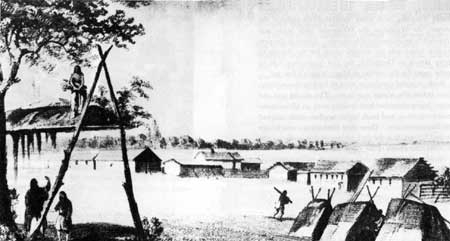
J. M. Stanley sketched this view of the Tshimakain
mission in 1853.
In the left foreground is an Indian burial on
poles.
Such crowded conditions were to lead to severe irritations before the winter was over. The diaries and the letters home show that hurt feelings were an all too common occurrence, and feuds began to gnaw at the unity of the Oregon mission. There were forebodings, which later proved correct, that the antagonisms of that winter would hurt the future work of the missionaries.
Among the disagreements was one between Whitman and Smith. It became evident that the two would not be able to work together. Always the pacifier, Whitman took the initiative by offering to leave Waiilatpu and begin a new station. But the arrival of spring brought a new spirit of cooperation. The Walkers and Eellses left for Tshimakain, and Whitman and Smith patched up their relations. Nevertheless, they did separate; but it was the Smiths who left. Asa and his wife moved to Kamiah, 50 miles up the Clearwater from Spalding, where they began a new mission among the Nez Percé. By the summer of 1839 there were four American Board stations in Oregon: Waiilatpu among the Cayuse; Lapwai and Kamiah among the Nez Percé, and Tshimakain in the country of the Spokan. Of these, the one most fully developed and the one destined to be the center for the Oregon field was Waiilatpu.
|
|

|
|
Last Modified: Sat, Sep 28 2002 10:00:00 pm PDT |


